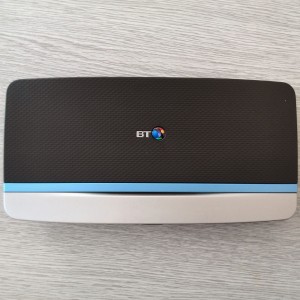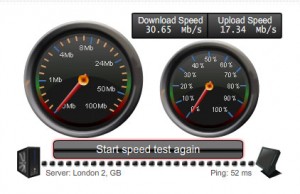I classify myself as a newbie as I have been diving into Asterisk / FreePBX for only 3 months. I am not familiar with 95% parameters of my IPPBX, and I try to avoid touching those parameters. However I can proudly say I have gained enough experience in setting up an IPPBX for a commercial environment, and I want to share it with you.
Before I start, I have to make it clear what my goals are, so you know if my experience suits you.
Firstly, I do not have massive users, say less than 100. We did not use any PBX, but once we launch IPPBX, it must be working very stably.
Secondly, users should be able to pick up the calls in the office, at home or on the move. Myself is a typical user, who answer 1/3 calls in the office, 1/3 at home, 1/3 on the move.
Thirdly, I want to save every pence possible on this first IPPBX. There are many IPPBX with Asterisk preinstalled and probably optimised on the market, whose prices start from £150. However I think at £150 it is an entry level product and geared for a SOHO enviroment. If I hunt for a proper commercial Asterisk IPPBX, I should look for something above £300. I am a fanatical DIYer and I believe business can take advantage of open source. Free open source allows business to do the same things other highly priced product can do, and sometimes does better. Of course the price of open source is the learning time. I spent £100 on the hardware (Bought from China directly. I evaluate it as £190 for similar hardware on the UK market), and 3 months in learning. A commercial Asterisk IPPBX with the equivalent capacity should be priced at £500 or so.
My 3 months’ learning only saved £400 which is a loss. Nevertheless, back to the topic – my gained experience in setting up an IPPBX.
I do not need to connect IPPBX to a physical analogue (POTS) or digital (ISDN) telephone line. If you do, and the more lines to connect, the more worthwhile to buy a commercial IPPBX with FXO or BRI ports built in. None of analogue/digital cards or ATA or ISDN gateways are cheap.
At the time of choosing a DIY IPPBX other than a commercial IPPBX, I was quite worrying about the stability. Now I can say software stability can be achieved by a newbie like me. But to make the whole system work reliably, I have to buy a decent hardware to run it on, and most importantly, a reliable network. My current ISP is horrible and due to be switched away in next month. It wasted me a lot of time debugging – barking at the wrong tree. I would not say “horrible” if I was only using their network browsing Internet. It looks like it can not afford VOIP traffic when it comes to host an IPPBX.
I set port forwarding on the NAT router where IPPBX is. I forwarded SIP bind port and RTP ports. I did not do everything at client side router. The SIP client should traverse a router not in my control.
I put NAT in Settings >> Asterisk SIP Settings to “route”, which instantly solved a lot of audio silence between various devices, i.e. high end SIP phone, entry level SIP phone, and several soft SIP phones installed on several Android based mobiles. I still can not understand the exact logical behavior of “yes”, “no”, “never”, “router” for NAT choice, but to me, “router” is the best choice.
I totally understand many people says SIP behind NAT is a nightmare. My IPPBX is behind a NAT router in the office, and if I am at home, my extension is behind another NAT router. This is the worst scenario. With FreePBX Distro and the above simple configuration, but without help of any third party modules, proxy, stun server, SER, the most difficult problem I encountered is one way audio on some devices / soft phones. It is always the caller can not hear voice from the callee, but the callee can.
Then I find enabling stun server on SIP client does not do anything good. Actually I find enabling Rport for signaling and media helps eliminating one way audio symptom if this choice is available. If your device does not have such a choice, but you have two devices at hand, you can dial out using one of them and transfer the call to the other one. This method makes both ends callees. So tricky. Do we really to do that? No. I have better way later on.
Missing codecs may cause audio silence, but it has nothing to do with one way audio. If a required codec is missing, both ends will be silent. I have a weird SIP trunk provider supplying 2 lines. Both lines have an external number (connecting PSTN) and an internal number (extension number on his SIP server). It turned out he enables different codecs for these 2 lines. And even on the same line, he enables different codecs for external number and internal number. It took me a long time before I realised it was a codec problem.
Although Android mobiles are widely available, it is worth buying SIP phones for office and home. SIP phones can stay online much more stable than any of soft SIP phones on Android mobile. It may not be a fault of soft phones. They are restricted by Android power management. The advantage of Android devices is you can choose SIP apps to install. To get the best of both worlds, the best buy is an SIP desktop phone with Android OS.
Among SIP apps, I recommend Zoiper (most stable, and support IAX2), CSipSimple (support video calls with CSipSimple video plugin), Samsung Galaxy built in SIP client (may be best choice in power saving), in turn.
It is time to summarise how to tackle one way audio. I mentioned IAX2. Yes, for soft phone, use it as the first choice over SIP. (Sadly as a hardware, VOIP phone with IAX protocol are not widely available.) I am using Zoiper on the move. In the office, as it in the same subnet, SIP traversing is not a problem, so any SIP phones will do the job. At home, use a SIP phone which can enable Rport, or use Zoiper.
I tried to achieve a stable IPPBX without having to periodically reboot it, but I could not. The IPPBX runs into a hanging state every a few days. For example, all trunks / extensions are disconnected. Even “amportal restart” can not solve the problem. A daily reboot is a must. Just choose a quietest time and use crontab to reboot. My IPPBX reboots in 34 seconds, which means the uptime is 99.96%. Normally the IPPBX will not hang within a day. But I set a monitoring script anyway to monitor if all trunks / extensions lose connection, reboot the IPPBX immediately. It never happened so far.
I also find IPPBX daily rebooting is a usual practice. I have monitored two of my SIP trunk providers are rebooting their servers daily. I am going to test it on a third one. Besides, I will be very glad to see a future version of FreePBX can run without rebooting for years as Nginx, etc.








